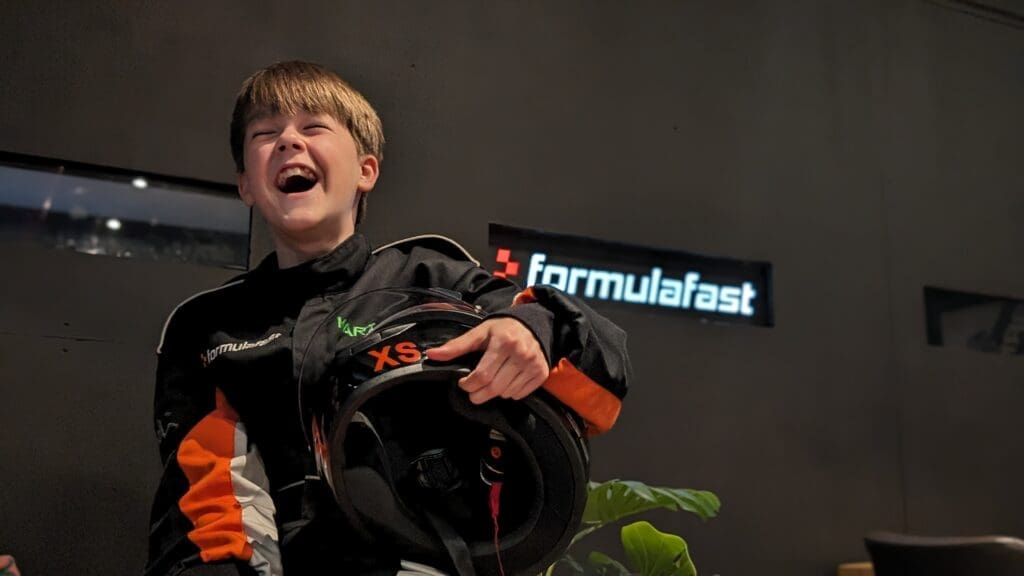If you’ve ever seen the ‘crash test’ videos showing a car being accelerated into a wall at high speed, you’ll know the lengths that car manufacturers go to, to ensure their car is built to withstand an impact and compress in the right places to keep the driver safe, should the worst happen.
Thankfully, we already know our karts are built to the highest specification when it comes to protecting the driver and are a proven technology, which contributes to our excellent safety record, and makes a karting event with us one of the safest activities out there.
But how about the barrier system?
Kart circuit barriers are important for two reasons. They define the circuit, and they act as a ‘stop’ between opposing lanes of traffic, or the perimeter of the circuit itself. As you might expect, they need to be able to withstand a fair amount of force whilst allowing some compression to absorb an impact better than something more solid.
A lot of planning and testing has gone into the design of our track, and when we’ve made a big change, I like to test our handiwork myself. This is strictly something only Stan or I would attempt, and is definitely a ‘don’t try this at home’ scenario. Having said that, our team are always strangely enthusiastic at the prospect of watching me execute a controlled crash, and last night they managed to catch some of it in slow motion.
We recently upgraded our pit entry and I was keen to see if it had met our objectives of keeping the driver safe, whilst acting as a ‘final stop’ between the track and perimeter walkway behind.
How do we build a safe barrier system?
We’re not going to give away our secret recipe, but it mainly boils down to careful thought, using very specific tyres and plastics and finding the right floor fixings for the job.
This comes from years of experience, and knowing how different barriers react to different speeds and weights. This particular area needed medium compression (to fall within the limit recommended by the National Karting Association), a little flex and no movement at the back due to a spectator area directly behind it.
The rubbing strip (a strp of material attached to multiple lengths of barrier to deflect karts and bind the lengths together) also needed to be rubber-based to allow stretching on impact without cracking. Plastic barriers & rubbing strip, whilst good for deflecting karts on high speed / low impact areas, would be too brittle in this scenario.
Believe it or not, the best tyres for barriers from kart circuits to Formula 1 circuits are ‘used’ car racing tyres. We use a combination of F3, F2 and GT3 extra wide slick tyres that would normally have seen action at top level single-seater and endurance racing around the world.
We also use marine-grade steel for all parts and washers on our barrier builds for non-corroding, long-lasting strength. Our floor bolts are 8 inches long, with 4 inch tyre bolts holding all the tyres together.
How do we test?
Well, for a start – we have a specific kart kept aside for testing which is checked thoroughly before I test it. It’s not used by our guests, and Stan and I are the only (self-designated) drivers. Sensibly I opt for a neck brace and rib protector (all gear provided to customers by Formula Fast).
I will be travelling at ‘worst case scenario’ speed – much faster than you would ever expect to arrive at this barrier – so you don’t have to!
Here’s the result…
As you can see, the new barrier absorbs the impact perfectly, without comprising the spectator fencing. In this case the driver (me) was kept safe and the kart and barrier both absorbed the impact.
It’s comforting to know that our hard work has paid off, and you guys are being kept safe out on the track.
Equally importantly, I’m still in one piece.
– Ollie.
###




